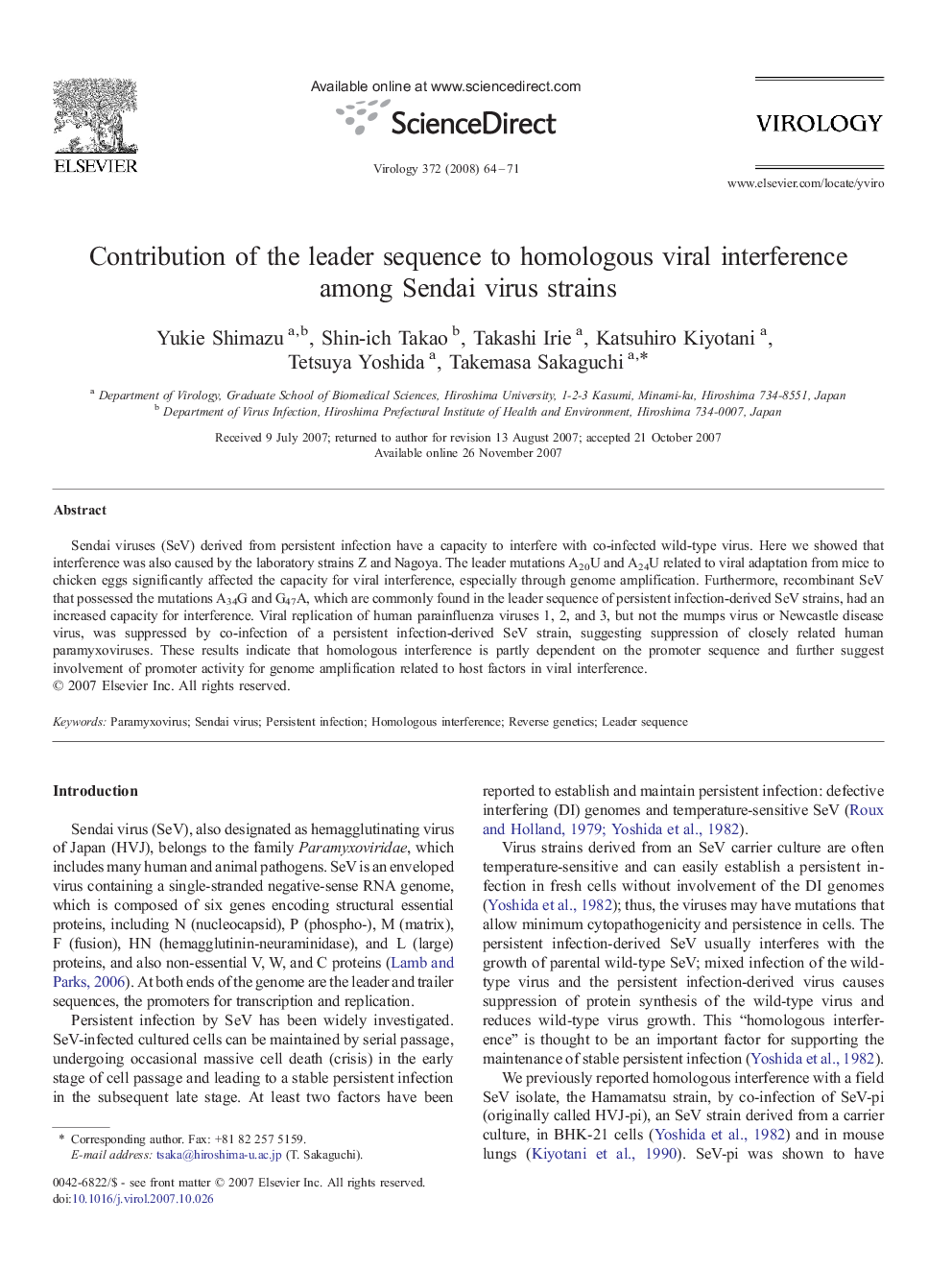| Article ID | Journal | Published Year | Pages | File Type |
|---|---|---|---|---|
| 3426495 | Virology | 2008 | 8 Pages |
Sendai viruses (SeV) derived from persistent infection have a capacity to interfere with co-infected wild-type virus. Here we showed that interference was also caused by the laboratory strains Z and Nagoya. The leader mutations A20U and A24U related to viral adaptation from mice to chicken eggs significantly affected the capacity for viral interference, especially through genome amplification. Furthermore, recombinant SeV that possessed the mutations A34G and G47A, which are commonly found in the leader sequence of persistent infection-derived SeV strains, had an increased capacity for interference. Viral replication of human parainfluenza viruses 1, 2, and 3, but not the mumps virus or Newcastle disease virus, was suppressed by co-infection of a persistent infection-derived SeV strain, suggesting suppression of closely related human paramyxoviruses. These results indicate that homologous interference is partly dependent on the promoter sequence and further suggest involvement of promoter activity for genome amplification related to host factors in viral interference.
